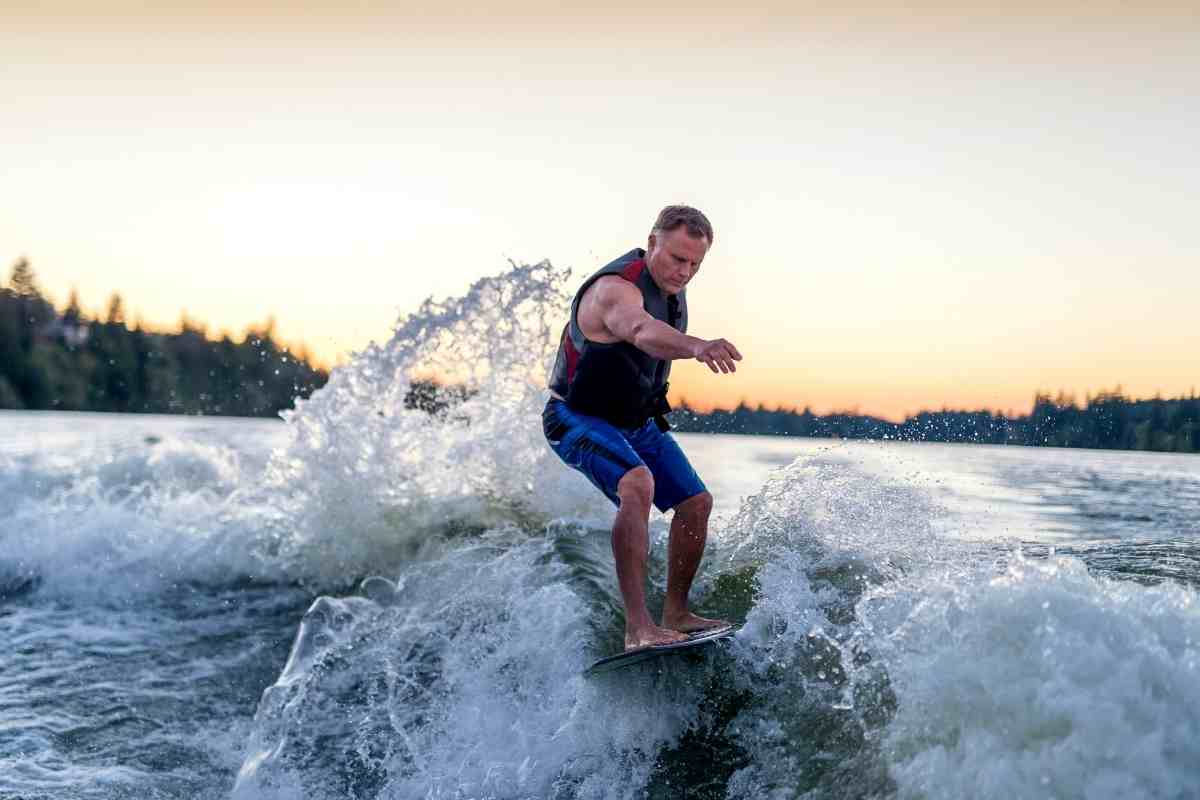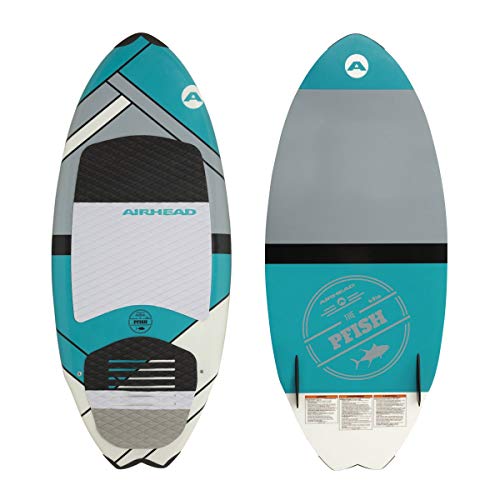Wakesurfing vs. Wakeskating, What’s The Difference? (Explained!)
Getting out into the water to enjoy some water sports is something that I have always wanted to try out. As a beginner, I realized a striking similarity between wakesurfing and wakeskating, and it’s easy to mistake one sport for the other. To enhance my skills, I researched, and here is everything I learned about the two sports.
What Is the Difference Between Wakesurfing and Wakeskating?
Wakeskating is similar to boat skating, but the rider isn’t bound by the skateboard, and the board has high tractions to provide an anchor. On the other hand, in wakesurfing, the rider trails behind a boat riding in its wake. Also, Wakeskates are quite smaller, but wake surfing requires the use of longer decks. Read on to learn more.
What Does Wakesurfing and Wakeskating Entail?
About 13.6% of Americans participate in watersports. If you are among this group, chances are, you have come across the terms wakesurfing and wakeskating. It can be difficult to tell the difference between the two water sports until you pay close attention.
Wakesurfing is a water sport whereby the rider surfs in the boat waves without necessarily being towed. The rider uses a tow rope to get up on the wave then drops the rope to enjoy surfing through the wake of the boat that mimics the feel and looks of an ocean wave.
You will need to use a wakeboard for wakeskating, but you aren’t entirely bound to it. The sports, therefore, provide a unique challenge. The board’s top surface has grip tape to secure the rider and prevent the chances of crashing. Some wakeskates even have an EVA foam which prevents the user from slipping.
The History of the Both Sports
Wakeskating began early in the 1970s, and riders would travel at the back of boats with long surfboards. With time, the surfboard became shorter. The riders began to put some grip tapes on old wakeboards, and wakeskating developed. From then, the sport gained massive popularity.
There is no definite date for when wake surfing started. However, there is footage of people enjoying the sport from as early as the 1950s. By the 1960s, manufacturers were already producing wake-specific board types.
How to Wakesurf and Wakeskate
For wakesurfing, you begin the sport while seated on the water, on the boat wake’s side, holding a tow rope in your hand. Keep your feet at shoulder’s width on the surfboard while facing the boat. The rope should also be between your feet at the center of the board. Once the boat moves forward, push down with your heels on the board’s edges to bring it into contact with the sole. When the boat touches your sole, always signal the driver to pull you up.
Get up and face the direction where the boat is headed. You have the freedom to decide what side of the wake you wish to ride in, but it’s a good idea that you face the wake for a beginner. Once you feel comfortable, you can let go of the rope into the opposite side of the wake, and those in the boat will retrieve it.
One main benefit of wakesurfing is that the board is long enough to support your body, promote good posture and balance. Such qualities make the sport safe. The only limitation of this sport is that it requires a lot of surfing experience. Once you release the ropes, you depend on your skills to balance and control the board.
On the other hand, for wakeskating, shoes are very significant components of the sport. Remember that you will need to stand on the grip tape, so wearing shoes makes this more bearable. You can start with your athletic shoes and upgrade to wakeskating shoes when you become proficient in the sport.
Begin by floating on the water, then push the skate under the surface to stand on it. Your front foot should bend a little more than the back. Ensure also that the board tip near the boat is close to the water surface. When the boat begins to move, the water pressure will push the board onto your feet.
Keep your knees bent and the arms straight and let the boat pull you up. You can use any boat type provided that it displaces ample water to create a big wave. This option gives you a chance to practice more of your skating tricks. Although you aren’t board bound, the ropes secure you making the sport a bit safer. You still need to learn how to balance and maintain your equilibrium.
The Key Differences of the Sports Based on the Derived Experience
Just as the name implies, wakesurfing is rather similar to ocean surfing. It’s generally a mellow option and more beginner-friendly. Your goal in wakesurfing is to let go of the rope as soon as you get into the boat wave. You should also remain behind the boat, maintaining the same speed from the wave. Aim at riding close to the boat so that you can hit the wave at its highest point.
The beauty of wakeskating is that the boat does some work for you. The side pull from the boat makes starting a bit simpler compared to wakesurfing. You still need to develop skills like flipping to enhance your experience. The tricks increase in complexity as you gain more experience since you might need to increase the height of the jump, adjust boat angle and increase boat speed.
Additionally, many riders find wake surfing more lenient on the body. Once you lower the rope, you can reduce the speed and enjoy wakesurfing for a longer period. Wakeskating is more adventurous, and it gives water sports enthusiasts a chance to explore new things and put more actions into their rides. It involves various tricks like kickflips, which can easily wear down the rider, so you are less likely to last for longer periods.
Which Sport Is Easier to Learn?
Wakeskating is interesting, but it appears rather more difficult to learn than wakesurfing for most riders. However, people well familiar with water skiing will find the skill relatively easier to learn. With consistency, a good boat driver, and a coach, you should be able to wakeskate after a short period.
It’s a bit easier to learn wakesurfing. Once you know how to get on the wave learning how to surf appears relatively easier. Wakesurfing also involves a slower boat speed, making it easier for beginners to gain confidence while learning. Although falls can happen, the chances of getting injured at a lower speed are minimal.

You can get injured on both sports but provided that you put on an impact vest, you should be alight throughout the training. You need to learn how to keep the wakesurf board under your feet once the boat pulls you up. This requires a lot of coordination, and it can thus affect the learning curve. Again, for both sports, your feet aren’t bound onto the board, so you can adjust your stance naturally to improve balance.
How to Select the Right Wakesurfing and Wakeskating Boards
While choosing a wakeskating board, select one with a flat deck, especially for beginners. Experienced riders can opt for those with more rockers for better maneuverability. Choose a size that matches your weight. For riders whose weight matches various board types, a smaller one can increase your maneuverability.
If you opt for one with a longer deck, you should watch your speed. It’s also a good idea that you choose wakeskates with foam tops. Such surfaces are more compatible with bare feet but remember always to have your shoes on if you choose one with grip tape.
For wakesurfing boards, consider the design of the edges. They affect the amount of water that passes past the board. A thinner edge will provide more speed and a quicker turn, while a thicker one offers more stability and a more consistent feel, making it a greater option for beginners.
Also, check the rocker lines. This is the curvature that determines the surface area of the boat touching the water. If you enjoy sporting in powerful steep waves, consider more rocker lines and less rockers for weaker waves.
Check also the wakeboard’s tail shape. Keep in mind that a pintail works well for bigger waves, while a square tail creates more floatation in more explosive rides. A round tail works great in most conditions, and a swallow tail is a great option for people who enjoy riding on smaller waves.
Conclusion
Though they look similar, wake surfing and wakeskating have very distinct differences. In both sports, a boat will pull you to help you get over the water.
Wakeskating allows you to show off your finesse and style. However, it may take time to learn and require shoes that can stand firmly on the grip tape. Wakesurfing is, however, easier for most people and less physically demanding. Hopefully, the above guide clears all your concerns to help you choose the right hobbies to partake in. You can still try both sports for more adventures.



